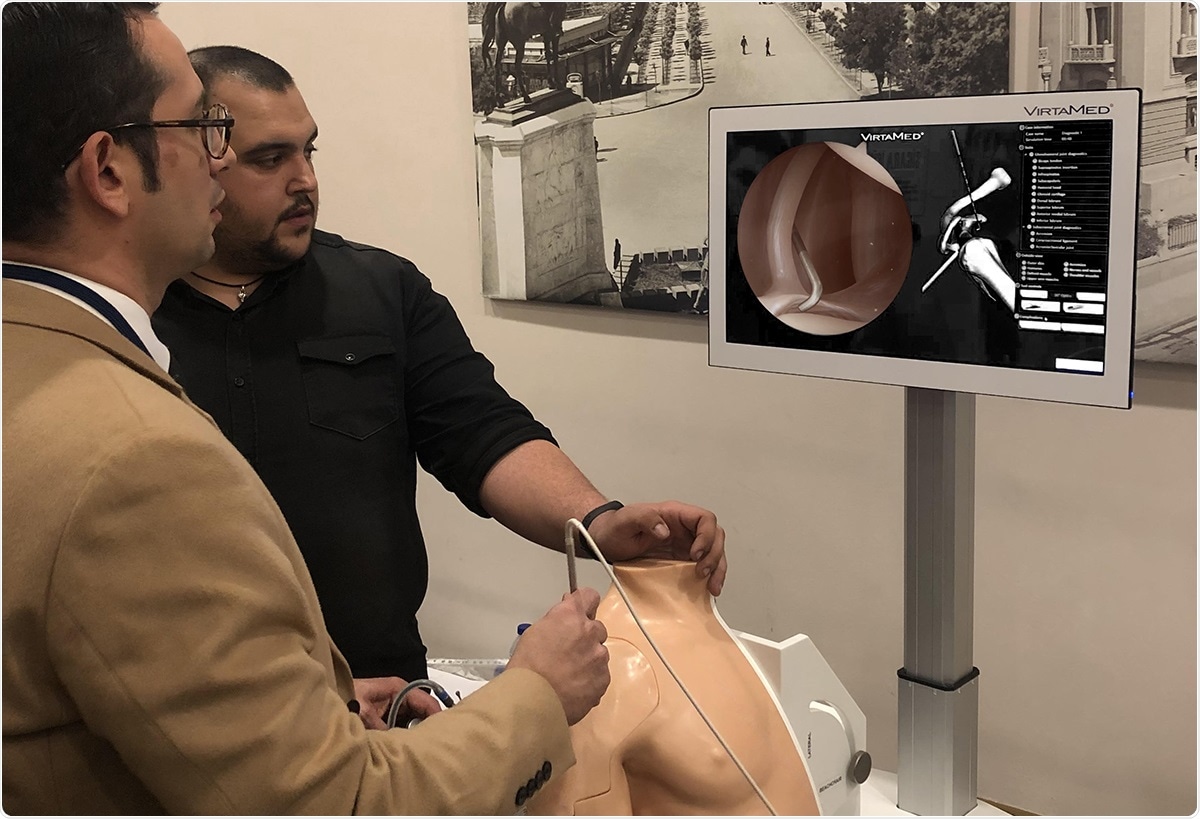The Turkish Journal of Medical Sciences published results of a study into Cadaver versus Simulator Based Arthroscopic Training in Shoulder Surgery, showing significant improvements in all elements of the course completion.

Image Credit: VirtaMed
It is estimated that 20,000 people a year in the US donate their bodies (cadavers) for scientific and medical training purposes. This has dramatically changed during COVID-19, with these types of training often cancelled, understandably due to the constraints imposed to control the spread of the virus. Even before the pandemic, each cadaver has limited use for medical training, and cadaveric training is not permitted in many other countries, there is vast potential for the growth in technology for training.
Simulation training has been able to continue throughout the pandemic, and forecasts predict that there will be a further shift towards virtual and mixed reality simulators. Findings of a recent study strengthens the evidence base for medical establishments to rapidly transition to digital training solutions and furthermore strengthens the outlook for simulation training in a post-COVID future.
Modern simulators are so advanced that they can realistically simulate the key elements needed to teach a surgical procedure including representing the physical anatomy for joint manipulation and palpation, and on-demand pathologies and complications. This way physicians can repeat their training cases ad infinitum until proficiency. In addition, simulators provide quantitative and visual feedback on damage, which is not possible with cadavers.
The recent study led by Dr. Gazi Huri, Turkish Academy of Science, Young Scientist Award Winner has highlighted the benefits of simulation training during arthroscopic shoulder surgery. Trainees, undertaking the European Orthopaedics & Traumatology Education Platform accredited Shoulder Club International Cadaver Course, performed surgery on either donated cadavers or the VirtaMed ArthroS™ simulator. The results showed that course completion was 20% quicker and that cartilage showed significantly less damage (30%) when students trained, via simulation, proving that simulator training is a competent training technology for now and the future.
In the case of the Shoulder Club International Cadaver Course, VirtaMed simulators provided trainees with visual feedback on damage caused to shoulder cartilage. Trainees were therefore more aware and able to adjust and improve their techniques accordingly. As a result, there was 50% more damage caused to the cartilage by residents that had only used cadaveric training.
Can simulators be the replacement for cadavers in the future?
With cadaver dissections still being seen as the golden standard for surgical training, their disadvantages have been highlighted during the pandemic - lack of replicability, lack of objective training metrics and of course the potential safety issues of close contact training.
During 2020 and into this year, simulation training continued due to its flexibility and the ability to train with added safety measures in place. The aim of this study was to research the efficiency of using medical simulators in surgical training as a replacement for cadavers. The results showed that all students, both the cadaver and simulation groups, achieved the proficiency levels required to be competent in arthroscopic shoulder surgery, yet there were further positive outcomes from those training on the ArthoS™ simulator.
Dr. Gazi Huri, Associate Professor of Orthopedics and Traumatology at Hacettepe University said, “It is obvious that precautions taken for the Covid-19 pandemic would last for a long time. This circumstance highlights the importance of less crowded, individualized educational models in the medical field. For the fields such as orthopaedics where practical training and hands-on education is an essential part, Virtual Reality Simulators can be considered as the best solution. As far as we know this is the first time a study of this sort has been undertaken. With the shift to VR simulators rapidly increasing in the medical training for several procedures, we wanted to demonstrate that the shift is beneficial to the industry. According to this study, we are able to state that VR Simulators are just as effective as cadavers for training arthroscopic procedures.”
Beat Rechsteiner, Senior Director International Business at VirtaMed, commented, “Our ArthroS™ simulator is used for training throughout the world and we are convinced that it is an essential training solution, particularly under the constraints of COVID-19. This study demonstrates that now is the time to invest in simulator training and benefit from training residents quicker, safer and with advanced proficiency.”
Read the full study: https://doi.org/10.3906/sag-2011-71
About VirtaMed
VirtaMed is the world leader in surgical training using mixed reality simulators for diagnostic and therapeutic arthroscopy, including the knee, shoulder, hip and ankle. With a combination of photorealistic graphics, tactile feedback, anatomically correct models, and original surgical instruments, VirtaMed’s simulators provide the most realistic and cost-effective training environment for orthopedic surgeons.
VirtaMed ArthroS™ includes diagnostic and therapeutic training for knee, shoulder, hip, and ankle arthroscopy, as well as the ABOS-mandated FAST module for fundamental surgical skills training. From ACL reconstruction to rotator cuff repair, VirtaMed ArthroS™ offers increasingly complex simulated patients and pathologies, incorporating advanced imaging techniques such as virtual fluoroscopy.
Physicians around the world use the VirtaMed ArthroS™ to learn in a risk-free training environment, and VirtaMed has partnered with medical societies and associations to develop standardized simulation courses using competency-based proficiency assessments and eligible for Continuing Medical Education (CME) Credits.